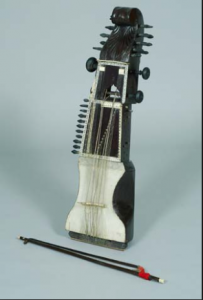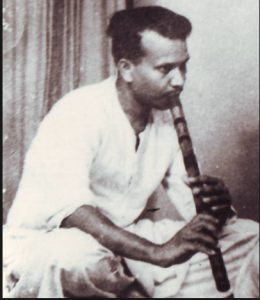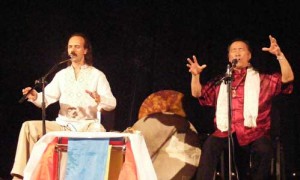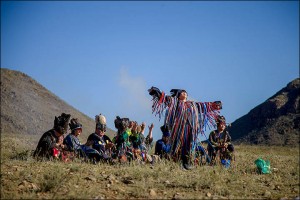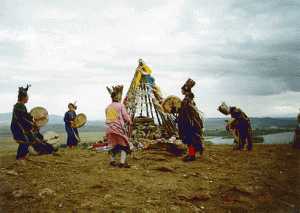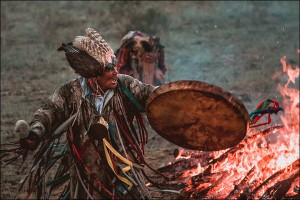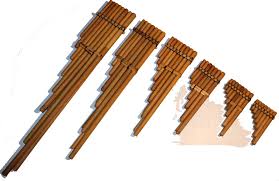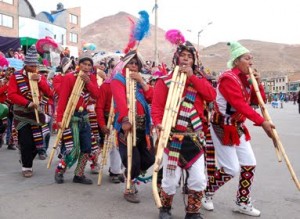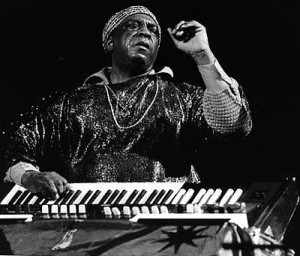Here is the video of John Cage that we viewed in class today:
Dagomba Drumming: The Language of Sound
The Grain of Hindi Film Songs
Jeanne Cohen, S. (Ed.). (1998). Film Musicals. In The International Encyclopedia of Dance. Oxford University Press.
Jones, J. (2015). Bollywood sounds: The cosmopolitan mediations of Hindi film song (pp. 5-9). Oxford, New York: Oxford University Press.
[Bansuriflute]. (2006, November 21). Raga Shivranjani on Bansuri (Indian Bamboo Flute). Retrieved from https://www.youtube.com/watch?v=7QuDEx3_Ygo
[AtlasEnsemble1]. (2013, November 4). Dhruba Ghosh demonstrates the sarangi. Retrieved from https://www.youtube.com/watch?v=m_yMf_Ra9XM
[The Biryani Boys]. (2008, April 1). Amazing Sitar Player. Retrieved from https://www.youtube.com/watch?v=hTPxqUtlLdo
[Maxwell Wolkin]. (2010, February 15). “Mehbooba Mehbooba” (Sholay). Retrieved from https://www.youtube.com/watch?v=6PCxTGZynpo
[AtoZ BollyWood Movie Songs]. (2010, February 2). Tujhe Dekha To Hai Jaana Sanam – Dil Wale Dulhania Le Jayenge. Retrieved from https://www.youtube.com/watch?v=qCZYOYrhkeA&list=PLkQGwWhksS3CPTL-HT2R2uOjobCnx_MAr
Findrishab85. (2013). Raghunath Prasanna Tripura Bansuri. Retrieved from https://commons.wikimedia.org/wiki/File:Raghunath_Prasanna_Tripura_Bansuri.jpg
J.-L. Charnoz. (2013). Saranghi ou Sarangi. Retrieved from https://commons.wikimedia.org/wiki/File:Saranghi_ou_Sarangi_(Luth),_%22Rituels_et_Musiques_du_Monde%22,_CPFI,_Festival_Les_Orientales_(Saint-Florent-Le-Vieil).jpg
Saifudheen. (2010). Sitarist Ibrahim – Sitar. Retrieved from https://nn.wikipedia.org/wiki/Sitar#/media/File:Sitarist_Ibrahim.jpg
Sarangi:
Bansuri:
Sitar:
Nature and healing represented through Khoomei
Trower, Shelley. “Hearing Vibrations.” In Senses of Vibration A History of the Pleasure and Pain of Sound. New York, New York: Bloomsbury Publishing, 2012.
Drake, Michael. “Shamanic Drumming.” By Michael Drake / Shaman Portal. Accessed November 12, 2015. http://www.shamanportal.org/article_details.php?id=703.
Deusen, Kira. “The Power of Sound.” In Singing Story, Healing Drum: Shamans and Storytellers of Turkic Siberia. Montreal: McGill-Queen’s University Press, 2004.
Levin, Theodore Craig, and Valentina Kei. Where Rivers and Mountains Sing: Sound, Music, and Nomadism in Tuva and beyond. Bloomington: Indiana University Press, 2006.
Levin, Theodore C., and Michael E. Edgerton. “The Throat Singers of Tuva.” Scientific American Sept. 1999: 80-87. Web.
Matrenitsky, Dr. Vladislav. “Uh-Hun. The Sound of the Sun.” Un-Hun. 2010. Web. 13 Nov. 2015.
Liesowska, Anna. “Shamans Rouse the Ancient Siberian Spirits.” The Siberian Times. 10 Sept. 2014. Web. 13 Nov. 2015.
“Shamanism in Tuva.” Khoomei.Narod. 2010. Web. 13 Nov. 2015.
Sounds:
(https://www.youtube.com/watch?v=TBrq4aDP3D0)
(https://www.youtube.com/watch?v=cFJZtbTWplU)
“Shamanic Drumming for Trance Journey Work, Theta Brain Rhythm Training.” YouTube. YouTube, Oct.-Nov. 2012. Web. 13 Nov. 2015.
“Shaman Chants and Throat Singing: Shaman/Healer Mauricio with Throat Singer Matthew Kocel.” YouTube. YouTube, 20 July 2011. Web. 13 Nov. 2015.
The Siku and Urbanization
Bibliography:
- Rios, Fernando . “Bolero Trios, Mestizo Panpipe Ensembles, and Bolivia’s 1952 Revolution: Urban La Paz Musicians and the Nationalist Revolutionary Movement.” University of Illinois Press 54, no. 2(2010): 282–316.
- Turino, Thomas. Moving Away From Silence. Chicago: The University of Chicago Press, 1993.
Pictures:
- http://landofwinds.blogspot.com.es/2013/01/andean-aerophones-06-tropas-of-sikus.html
- https://encrypted-tbn3.gstatic.com/images?q=tbn:ANd9GcR9KdbDlYYBJUtAwHnTTzs6Kc6v6mSRQe-13msfg9Mu3Bk5_Cqd
Sounds:
- https://www.youtube.com/watch?v=MNJRUx1DYmI
- https://www.youtube.com/watch?v=IO67RZMtd3M
- https://www.youtube.com/watch?v=kNkOOuVYYdI
Sonic Dominance: The Sound of God
By Asher Bean and Emily Downing
BIBLIOGRAPHY:
Nusrat Fateh Ali Khan Bibliography
Deep, Aman. Alaap by Ustad Nusrat Fateh Ali Khan in Movie The Last Temptation of
Christ. YouTube. YouTube, 8 June 2013. Web. 10 Nov. 2015.
.
Ganapathy, Subbu. Vedic Chanting from South India Part 1. YouTube.com. YouTube,
11 Jan. 2009. Web. 13 Nov. 2015. <https://www.youtube.com/
watch?v=0tZv9utp-oc>.
Khan, Nusrat Fateh Ali. Interview by Andy Carvin. 1993.
Mast, Raho. Amir Khusro Sufi Kalam. YouTube. YouTube, 19 Mar. 2011. Web. 10 Nov.
- .
O’Neil, Susi. “Qawwali: Music of the Sufis.” Pilot Guides. N.p., n.d. Web. 10
Nov. 2015. <http://www.pilotguides.com/articles/
qawwali-music-of-the-sufis/>.
Rashid, Hussein. “Qawwali and the Art of Devotional Singing.” Worldwide
Locations. Asia Society, 2007. Web. 13 Nov. 2015.
.
Web, Desi. Nusrat Fateh Ali Khan in Central Park New York Full Concert.
YouTube.com. YouTube, 12 Mar. 2012. Web. 13 Nov. 2015.
.
Wijeratne, Dinuk. “Velvet Fire.” WIJERATNEWORKS (2013): n. pag. Print.
Pictures:
http://blog.uvm.edu/vlbrenna-sound2015/2015/10/20/sonic-dominance-and-the-reggae-sound-system-session/
http://www.neontommy.com/news/2014/11/why-sufi-best-genre-music
http://www.shiamultimedia.com/qawwali2.html
http://kunzum.com/2010/11/17/delhi-enjoy-the-weekly-qawwalis-at-nizamuddin-dargah/
http://www.pri.org/stories/2014-11-03/pakistani-musician-brought-sufi-music-mainstream
http://www2.ljworld.com/photos/2006/may/13/97639/
https://dontforgetthesongs365.wordpress.com/2012/11/11/eddie-vedder-featuring-nusrat-fateh-ali-khan-the-face-of-love/
https://cultureatkamelia.wordpress.com/tag/hindu-wake-singing/
http://www.patheos.com/blogs/whitehindu/2013/11/mantra-v-s-prayer-whats-the-difference/
http://www.carmel.lib.in.us/blog/blog.cfm?id=418
Japanoise: Music, Noise, or False Dichotomy?
Citations:
“Kraftwerk – The Man-Machine (Full Album Bonus Tracks) [1978].” YouTube. Accessed November 13, 2015. https://www.youtube.com/watch?v=NL3NqfFTec8.
“Masonna Festival Beyond Innocence, Bridge, Osaka 2002 Japanoise.” YouTube. Accessed November 13, 2015. https://www.youtube.com/watch?v=ylDuOmEoZx0.
Novak, David. “Japanoise: Music at the Edge of Circulation.” Japanoise. Accessed November 13, 2015. http://www.japanoise.com/images/book.jpg.
“Noise Music Japanoise Composition 34-1.” YouTube. Accessed November 13, 2015. https://www.youtube.com/watch?v=zhNvAduJe9k.
Nagel, Rob, and “Kraftwerk.” Contemporary Musicians. 2006. “Kraftwerk.” Encyclopedia.com. 1993. Accessed November 13, 2015. http://www.encyclopedia.com/topic/Kraftwerk.aspx.
“70’s Japanese Pop Style.” Amazon AWS. Accessed November 13, 2015. https://s3.amazonaws.com/rebelsmarket_production/blog/post_pictures/data/content/3069.jpg.
“Hijokaidan Vomit.” Jagged Visions Zine. Accessed November 13, 2015. https://jaggedvisionszine.files.wordpress.com/2010/02/hijokaidanvomit.jpg.
“Hijokaidan – Untitled.” YouTube. Accessed November 13, 2015. https://www.youtube.com/watch?v=JKBsN67eDSA.
The End of Being. Accessed November 13, 2015. http://theendofbeing.com/wp-content/uploads/2010/05/CM-Capture-2.jpg.
“HANATARASH.” YouTube. Accessed November 13, 2015. https://www.youtube.com/watch?v=L7p_C9OlN40.
“Figure 7.” Art and Education. Accessed November 13, 2015. http://www.artandeducation.net/wp-content/uploads/2011/06/fig-7.jpg.
Henriques, Julian. “The Auditory Culture Reader.” Edited by Michael Bull and Les Back. Sonic Dominance and the Reggae Sound System Session.
Barthes, Roland. “Music Image Text.” The Grain of the Voice.
Theremin: The Anonymous Instrument
Bibliography:
Seabrook, John. “Vibrations.” The New Yorker 9 May 2011: 23. Literature Resource Center. Web. 10 Nov. 2015.
Orton, Richard, and Hugh Davies. “Theremin [Termenvoks].” Oxford Music Online. 2007. Accessed November 9, 2015. http://www.oxfordmusiconline.com:80/subscriber/article/grove/music/27813.
Townsend, Peter. “The Role of Physics in Shaping Music.” Academic Search Premier. 1975. Accessed November 4, 2015.
Space Is the Race
This is a podcast that was made to show the world how Sun Ra has influenced music, culture, and society. This is just the tip of the iceberg, there is so much more information to be found on Sun Ra and his incredible life.
http://afrofuturism.net/
http://dangerousminds.net/comments/sun_ra_on_detroit_tv_1981 Click this link to see an interview with Sun Ra in 1981
Sun Ra’s first song on the soundtrack to his movie, a symbol of Afrofuturism.
https://www.youtube.com/watch?v=4fBdl2Kfk7c
This song represents uses of dissonance.
Sun Ra Live
Barthes, Roland, and Stephen Heath. Image, Music, Text. New York: Hill and Wang, 1977.
Digable Planets, What Cool Breezes Do, 1993, Capitol Records
Eberhardt, Maeve, and Kara Freeman. “‘First Things First, I’m the Realest’: Linguistic Appropriation, White Privilege, and the Hip-hop Persona of Iggy Azalea.” Journal of Sociolinguistics J Sociolinguistics: 303-27.
Kreiss, Daniel. “Appropriating the Master’s Tools: Sun Ra, The Black Panthers, and the Black Consciousness, 1952-1973.” Black Music Research Journal 28.1 (2008): 57-81
Madvillain, Shadows of Tomorrow, Madlib, MF Doom, 2004, Stones Throw Records
Parliament, P-Funk (Wants to Get Funked Up), George Clinton, 1975, Casablanca Record
Szwed, John F. Space Is the Place: The Lives and times of Sun Ra. New York: Pantheon Books, 1997. 167-223
Sun Ra, Images, 1974, ESP-Disk
Sun Ra, Sun Ra and his Band from Outer Space, 1970, ESP-Disk
Dark Side of the Cell
The media artist Anne Niemetz and the nano-scientist Andrew Pelling have collaborated on a video-installation that uses recordings of cellular sounds. Read more about it and listen to examples at “Dark Side of the Cell”


